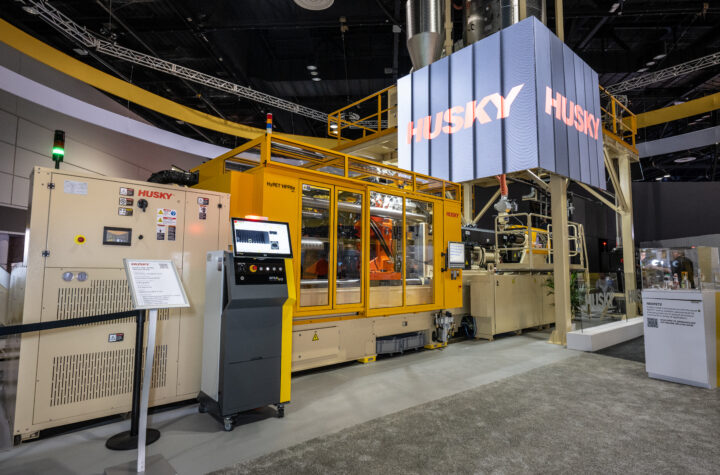Free trade agreements are rarely free. They tend to be burdened with inter-country spats, local protests and political opposition.
CAFTA will remove trade barriers and reduce tariffs on products sold by the signatories , the US, Costa Rica, the Dominican Republic, El Salvador, Guatemala, Honduras and Nicaragua. Between them, the seven countries do $33bn worth of business annually.
US president, George Bush, promised manufacturers and politicians that CAFTA would throw open investment opportunities to US companies in Central America and simultaneously increase US exports. While six countries have ratified CAFTA, Costa Rica still has to ratify the pact.
Automotive industry apprehensive
While other industries are still working out how CAFTA will affect them, the pact has given the US automotive industry the jitters. Local manufacturers are losing out to international rivals thanks to cheap imports. So it is no surprise that auto workers view CAFTA with deep suspicion.
Mainly because they fear automotive manufacturers will shift production to Central America in order to benefit from lower wages in these countries average between $1 to $2 per day compared to the $27 workers are paid in companies like GM.
CAFTA did not win on the merits. The Republican House leadership had to hold the vote open and President Bush had to twist arms and load up the energy and transportation bills with pork-barrel projects to win the narrowest possible victory, said Ron Gettelfinger, UAW boss in a fiery speech after CAFTA was cleared.
He quoted the US trade deficit figures with Canada and Mexico which has spiraled from $9bn in 1993 to more than $111bn in 2004. Detroit auto manufacturers exported only $125m to CAFTA nations last year compared to total auto exports of over $35bn.
View from the other side
Countries like El Salvador and Costa Rica, hope to benefit from CAFTA by attracting much-needed foreign investment. “By raising the level of marketplace competition and lowering barriers to trade, today’s agreement benefits economies both at home and abroad. CAFTA empowers American businesses to contend in the global marketplace, and ensures commerce flows fairly and freely between member nations. Increased trade cements ties between countries, and in turn will bolster the budding democracies throughout Central America, said William H Frist (R-TN), the US Senate majority leader.
“Furthermore, this legislation ensures that America’s small businesses and families are able to buy, sell and shop without being at a competitive disadvantage. The benefits of free trade have been particularly positive for my home state of Tennessee. Over 156,000 employees and 4,000 businesses and countless farmers in my state already benefit from past trade agreements, and this new agreement will continue that trend by ultimately generating over 2,000 new Tennessee jobs, he added.
This October, a delegation of nearly 20 US businessmen including a representative from Ford and led by Carlos Gutierrez, US commerce secretary, traveled around the 6 Central American CAFTA member countries.
“We’re going to have companies that are ready to sell and ready to do business. And we’ll hopefully have companies on that end ready to do business as well,” said Gutierrez, speaking to Reuters.
“If you are going to sustain support for free trade over the long term, you need to show that these deals actually work,” said Stephen Biegun, vice president, international government affairs at Ford who was traveling with the group to Bloomberg.
Automotive industry in Central America
The Central American signatories to CAFTA, specifically Costa Rica have already attracted automotive firms to their countries. Today, Bridgestone Firestone produces more than 8,000 tires per day destined to the United States for use in cars and light trucks and has about 1,000 employees. ? said Edna Camacho, Director General, at The Costa Rican Investment Promotion Agency (CINDE).
Costa Rica has attracted investments from a number of global firms such as Intel, Hospira, Baxter and P&G. And of course, automotive manufacturers for example, South Koreas Daewoo Bus Company has a semi knock down operation called Mauco which assembles buses with capacity of more than 25 passengers. The finished products are exported to the rest of Central America.
MicroTechnologies makes TPS, PPS and EGR sensors and other critical parts for automotive original equipment manufacturers (OEMs), in Costa Rica. The facility was built in 2001. Over the past years, our activities in Costa Rica have gone from a small satellite facility to the primary manufacturing center for our global operations. the keys to our success rest largely in the talented workforce available, as well as a proactive government and a good logistical position for our needs, said Michael Tucci, President of Microtechnologies.
Most of the automotive companies already located in Costa Rica produce parts and sub-assemblies that take advantage of the countrys highly skilled labor and compliance with the strictest quality regulations to supply international markets, said Camacho.
Seton, a leather car seat cover manufacturer that supplies Audi, BMW, DaimlerChrysler, GM, Porsche, and VW among others, has been operating in Costa Rica since July 2002. Two years later, it opened a world-wide logistics facility to handle all its purchasing and delivery requirements. Companies such as Bourns-Trimpot, Wai Semicon a Wetherill Group associate, IDI International, ITT Industries are providing electronic components such as specialty switches, starters, lighting devices and voltage regulators at competitive prices and outstanding quality and delivery, added Camacho.
Other automotive suppliers in Costa Rica include Hutchings Automotive -part of Mehra Tube- makes tube assemblies for engine oil, coolant, and transmission fluid. Software company VIA Information, a supplier of application software for manufacturers of automotive and electronic components, opened an operation in Costa Rica in early 2005.
Similarly, Costa Ricas, strategic location and educated work-force, make it an important investment destination. The government is offering a number of incentives to investors. Once a company decides to invest in Costa Rica, it is not left alone. CINDE, the Costa Rican Investment Promotion Agency provides assistance and helps the company grow in the country by attracting companies that may support it as well as with permits and other issues, said Camacho.
Shipping raw materials and finished goods is not difficult since there are 7 to 22 daily flights by 11 carriers. Costa Rica has maritime access by ports in the Atlantic and Pacific oceans, therefore, sea transportation is easier. There are 28 main lines that dock in Moin, our Atlantic port, and 7 lines docking Caldera, the Pacific port. Because of its location in the center of the Americas, companies can easily communicate due to similiar time zone with production floor, administration, engineering and all the supply chain participants, allowing a much faster response to customers,? she added.
Costa Rica offers incentives to firms wishing to set up manufacturing bases such as complete exemption on import duties on raw materials, components and capital goods as well as income tax exemptions. Since Costa Rica complies with the WTO guidelines on intellectual property rights, patent infringement is not a worry.
Its no wonder then, that Costa Rica is solidifying its position as a complementary site to US companies looking for a near-shore location for automotive parts that many products cant do without but must be made at a lower price maintaining quality, delivery, and that demand a well trained, low-attrition work force.
For more information, visit CINDEs web site at: http://www.cinde.org
The CAFTA market
The combined CAFTA market for automobiles is estimated to be around 1,258,500 vehicles annually. CAFTA is expected to bring down tariffs by as much as 20%.In El Salvador, for example, where the annual vehicle market stands at 163,400 units, CAFTA is expected to bring down import duties by 1 to 20%. The government of El Salvador is currently looking to increase its public transport fleets by infusing $10m.
As a result of the economic and social reforms adopted in the 1990’s and continuing today, El Salvador has the lowest inflation and interest rates in the region and no devaluation risk because the country’s legal tender is the U.S. dollar. The investment grade ratings granted by Moodys and the Wall Street Journal/Heritage Foundation rank El Salvador as the second most open economy in Latin America after Chile. El Salvador currently has Free Trade Agreements with Mexico, Chile, the Dominican Republic and Panama, and is in the process of ratifying a Free Trade Agreement with the United States, said Ana Vilma de Escobar, vice president of El Salvador.
El Salvador has also achieved success in its privatization efforts in the telecommunications sector, in energy distribution and with its pension funds system. The banking system was re-privatized in the 1990’s. The total assets of the Salvadoran banking system today represent one third of all of the assets in the Central American banking system. In addition, El Salvador is strategically located in the heart of Central America, which makes it ideally located to become a regional logistics and distribution center. In 2005, El Salvador began the construction of a new deep-sea port in the Pacific Ocean coastline of La Union, the western part of the country. This port will be the second largest port in the region after Panama, and will be connected by a fast overland route to the Atlantic, she added.
El Salvador is currently constructing the second-largest deep-sea port in Panama at La Union. This will be connected to an overland route to the Atlantic and will help the country become a main distribution hub in the CAFTA region.
El Salvador has the additional benefit of having an educated work-force the country has 110,000 students enrolling in its universities every year with 5000 students graduating annually with technical degrees. The human quality of our people makes our work force a very special one, so special that the Salvadoran labor force is recognized throughout the region and the world, said Patricia Figueroa, executive director of PROESA.
In Guatemala, 256,300 vehicles are sold annually. Most of the vehicles bought, tend to be second-hand, bought directly from US auctions and repaired locally. In Honduras, 111,900 vehicles are sold annually. The government passed strict laws in 2001 to cut vehicular emissions. So the market for emission control devices is good another area where US companies are expected to make a mark after CAFTA.
Similarly, Costa Rica, strategically location and educated work-force, make it a an important investment destination. The government is offering a number of incentives to investors. Once a company decides to invest it Costa Rica, it is not left alone. CINDE, the Costa Rican Investment Promotion Agency provides assistance and helps the company grow in the country by attracting companies that may support it as well as with permits and other issues, said Morine.
Shipping raw materials and finished goods is not difficult since there are 7 to 22 daily flights by 11 carriers. Costa Rica has maritime access by ports in the Atlantic and Pacific oceans, therefore, sea transportation is easier. There are 28 main lines that dock in Moin, our Atlantic port, and 7 lines docking Caldera, the Pacific side port. Because of its location in the center of the Americas, companies can easily communicate due to similiar time zone with production floor, administration, engineering and all the supply chain participants, allowing a much faster response to customers, she added.
Costa Rica offers incentives to firms wishing to set up manufacturing bases such as complete exemption on import duties on raw materials, components and capital goods. Exemption on taxes on profits. Plus 25% of goods manufactured in the country are allowed to be sold locally. Since Costa Rica complies with the WTO guidelines on intellectual property rights, patent infringement is not a worry.
Future trade treaties
It remains to be seen what the economic impact of CAFTA will be on the seven countries that signed the pact. Currently, unions are more apprehensive about upcoming agreements with Thailand, Argentina and Brazil. Analysts say that if the 25% import tariff on Thailands products are lifted, the US could be flooded with pickup trucks made in Thailand. Thailand is the worlds second largest manufacturer of pickup trucks.
According to the UAW, it could result in 20,000 workers losing jobs. Honestly, I think it has already affected us. Think about the Ford Ranger remodel. Were working with an old model truck that they have not reconfigured because they are waiting to see what happens with the Thai trade agreement, said Rob McKenzie, a UAW leader, quoted on the union web-site.
Similarly, the Central American countries that signed CAFTA, have faced protests at home. Mainly led by farmer and labor organizations. Costa Rica, which is yet to ratify the pact, is said to be dithering because of the incorporation of the telecom sector in the agreement.
Critics in the US, cite the example of NAFTA, which they say did not do either Mexico or the US any good. And warn that CAFTA could in turn shift jobs from Mexico to Central America. Thus triggering a wave of wage cuts that could result in a deterioration of workers rights.














































 Maersk to buy into Shanghai port
Maersk to buy into Shanghai port



